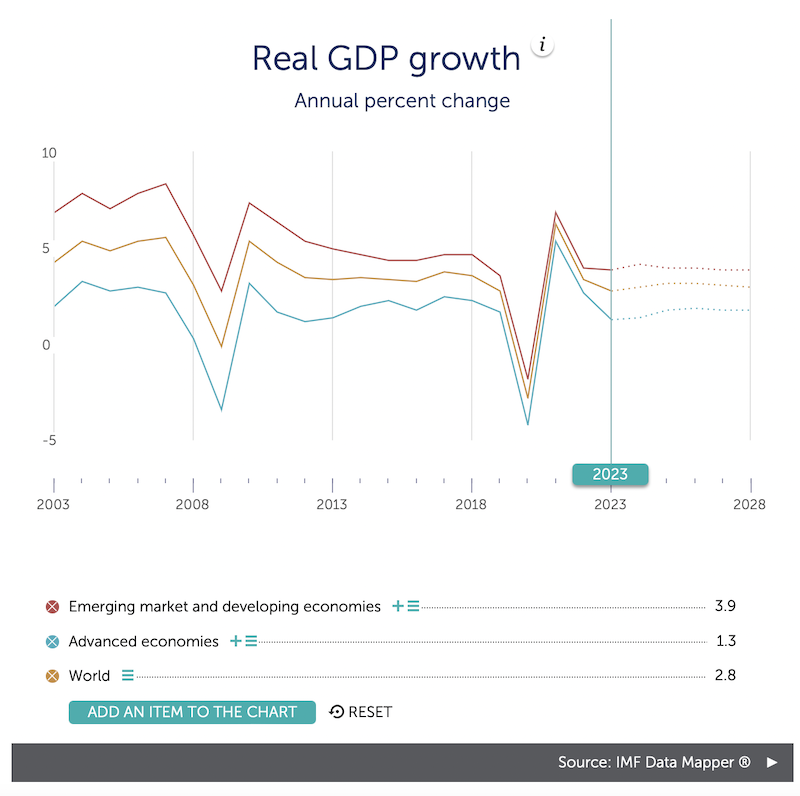World Economic Outlook Shows Economies Facing High Uncertainty – Analysis
By Mehdi Benatiya Andaloussi and Chiara Maggi
Our latest World Economic Outlook forecasts that growth will slow from 3.4 percent last year to 2.8 percent this year. Growth is then expected to accelerate to 3 percent next year.
Risks to the outlook are heavily skewed to the downside, with heightened chances of a hard landing. In a plausible alternative scenario with further financial sector stress, global growth would decelerate to about 2.5 percent in 2023.
Looking further ahead, growth is expected to remain around 3 percent over the next five years. This baseline forecast of 3 percent five years ahead for 2028 makes it the lowest medium-term growth projection since 1990, and well below the average of 3.8 percent from the past two decades.
The anemic outlook reflects the tight policy stances needed to bring down inflation, the fallout from the recent deterioration in financial conditions, Russia’s war in Ukraine, and growing geoeconomic fragmentation.
The Chart of the Week brings together all gross domestic product forecasts in our latest assessment. Add any economy or grouping from the dataset to the chart. Move the slider for historical data or future estimates.
About the authors:
- Mehdi Benatiya Andaloussi is an economist in the World Economic Outlook Division of the IMF’s Research Department. Previously, he worked in country teams of the Western Hemisphere Department and the Middle East and Central Asia Department. His research is in applied econometrics, with a focus on commodities and energy economics. He obtained his Ph.D. from Columbia University.
- Chiara Maggi is an Economist in the World Economic Outlook division of the IMF’s Research Department. Before that she worked on the Morocco desk in the Middle East and Central Asia Department and in the Structural Reforms Unit of the Research Department. Her research focuses on the macroeconomic impact of structural reforms, firm dynamics and corporate market power. She holds a PhD in Economics from Northwestern University.
Source: This article was published by IMF Blog


